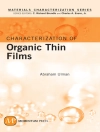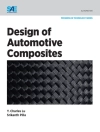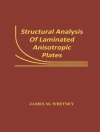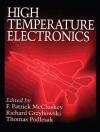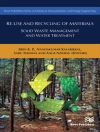This book highlights the morphology-property relationship of regenerated cellulose materials and composites, as morphology of materials is the key feature and corresponds to associated applications of/to the materials. It is highly essential to assimilate the literature on morphology-property relationship of cellulose materials. Being the most abundant natural polymer on earth and gateway to large number of applications, cellulose is expected to be researched for higher efficiencies. Various books and research articles have targeted the specific morphologies, the respective characteristics and application areas. This book presents literature on morphology-property relationship of cellulose materials and provides a direction to this relationship.
Зміст
An introduction to regenerated cellulose: Morphologies and applications.- Green chemistry approaches to cellulose dissolution and regeneration.- Recent Advances in Regenerated Cellulosic Materials and Composites for Multifunctional Applications: a review.- Surface Modification of Regenerative Cellulose (RC) for Biomedical Applications.- Nanocellulose Materials and Composites for Emerging Applications.- Potential Technologies to Develop Cellulose Beads and Microspheres.- Cellulose Based Materials for Chromatography and Separation Applications.- Cellulose Morphologies for Energy Applications.- Cellulose and Its Composites in Textiles and Food Industry.- Regenerated Cellulose and Composites for Biomedical Applications.- Pharmaceutical and Biomedical Importance of Regenerated CEL and Composites in Various Morphologies.- Sustainable biomedical applications of cellulose.
Про автора
Dr. Mohd Shabbir is an assistant professor at Department of Chemistry, GL Bajaj Institute of Technology and Management, Greater Noida, India. Prior to this, he had been working as a post-doctoral fellow in the lab of Professor Xiaogang Luo at School of Chemical Engineering and Pharmacy, Wuhan Institute of Technology, Wuhan, China. He worked there on regenerated cellulose materials for environmental remediation, sensing, and biomedical applications. He has also worked as an Assistant Professor in Sanskriti University Mathura and NIET, Greater Noida. He got his doctorate degree in the field of natural dyes application on textiles from Jamia Millia Islamia, New Delhi, India in 2017. He has more than 40 peer-reviewed scientific research publications and 4 edited books. Biopolymers, cellulose materials, biomaterials for adsorption and catalysis




